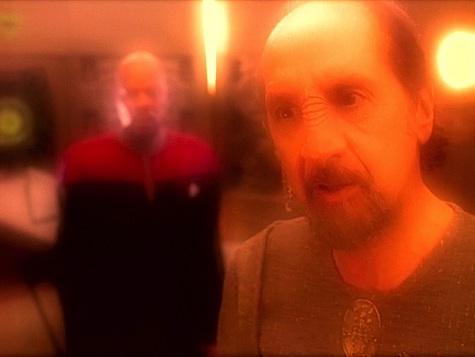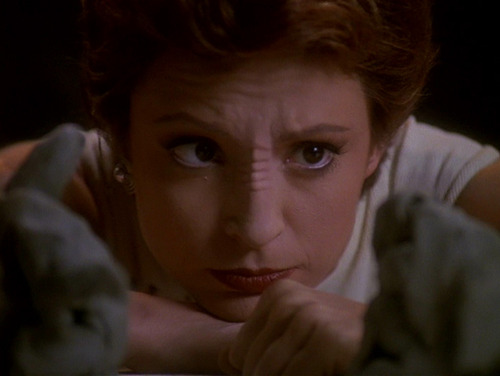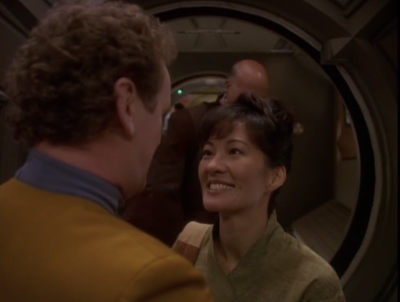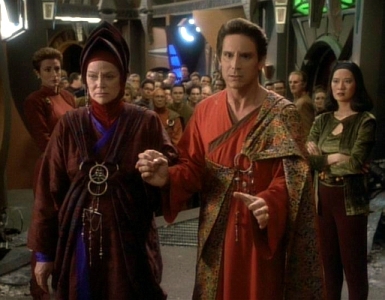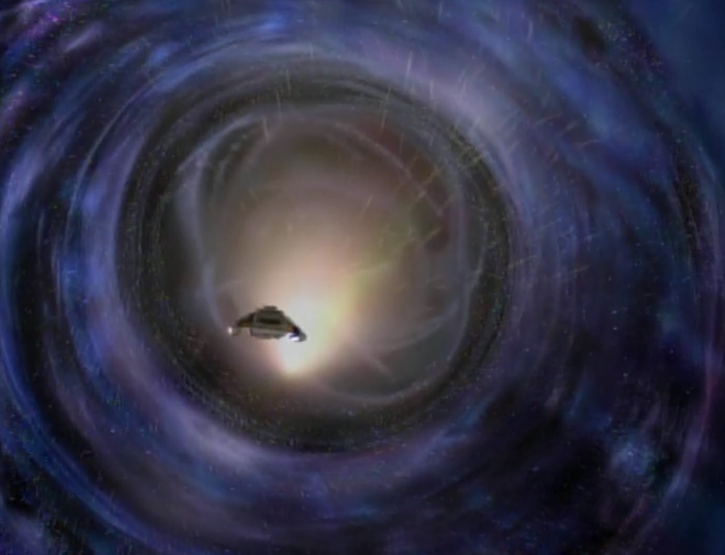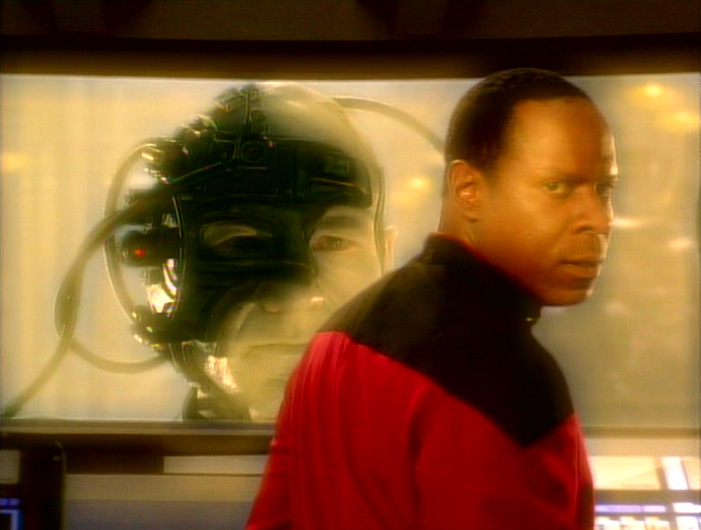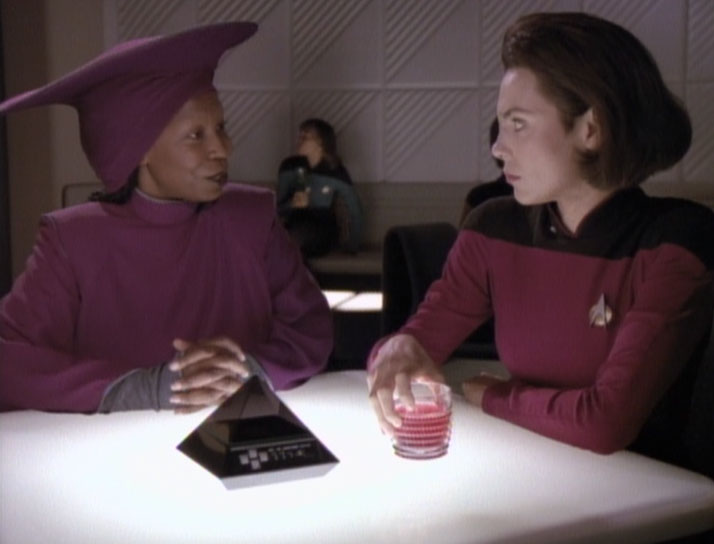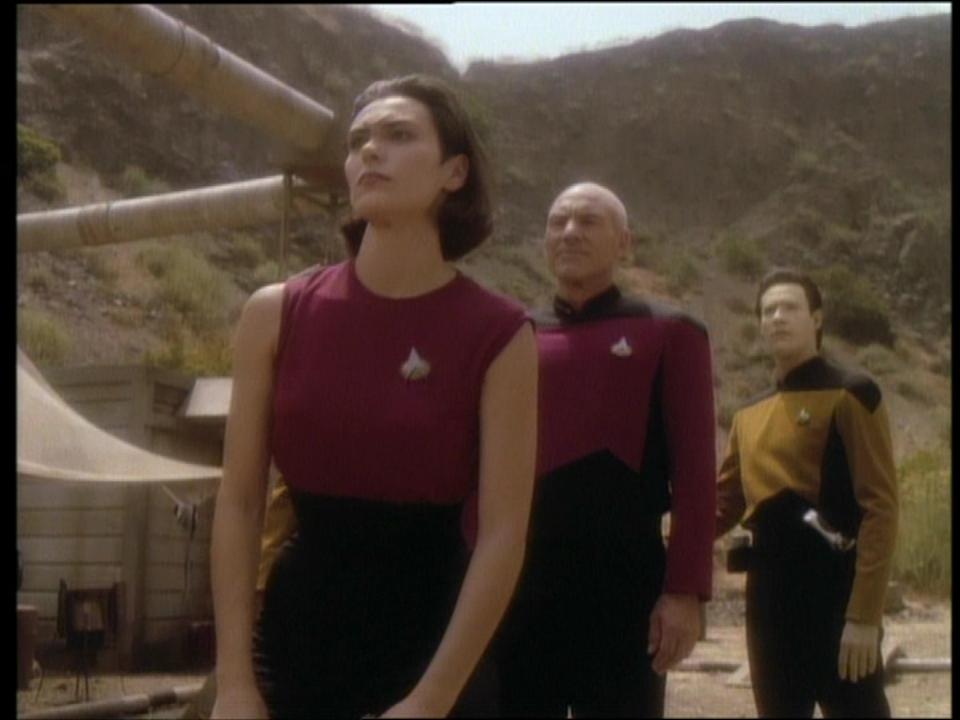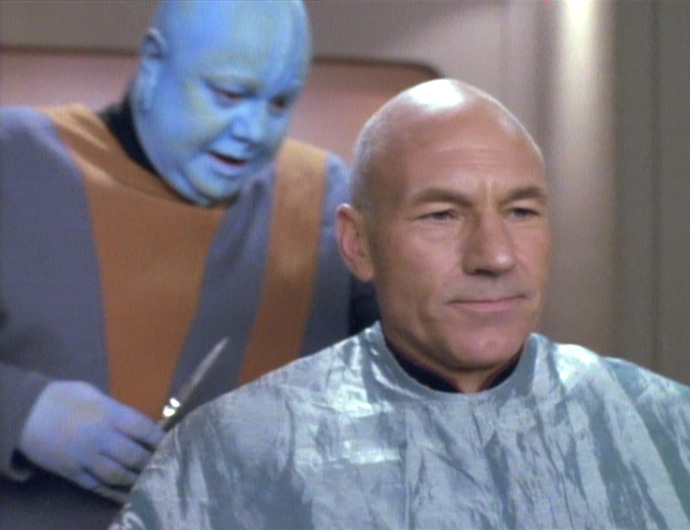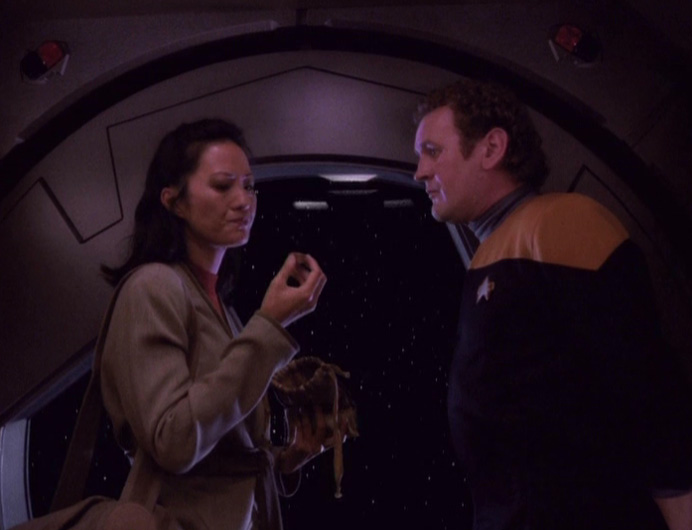
Keiko returns from some trip that sort of explains why she’s never around and tells O’Brien that she’s actually an alien who’s taken control of Keiko’s body. She gives O’Brien a bunch of stuff to do on the station and tells him if he informs anyone, she’ll kill Keiko. O’Brien gets everything done with the help of Quark’s dumb brother Rom (Max Grodenchik) and realizes the thing in Keiko is likely a pah-wraith, sort of the evil version of the prophets who live in the wormhole. Keiko’s plan seems to be to use the modified station to kill all the prophets. O’Brien leaves the station with Keiko in a runabout and then activates the modifications on the station and fires toward the wormhole. But the shot hits the runabout instead, killing the thing inside Keiko. Keiko is shaken, but OK.
Why it’s important
In what could have been a pretty forgettable episode, we meet the pah-wraiths, who play a major, major role down the stretch in DS9. We even learn that they’ve been hanging out (banished to, really) the fire caves on Bajor.
Also of note is the continued evolution of one of the series’s worst characters, Rom. By this point, he’s still the moron he was early on, but he’s also a “engineering genius”. To the show’s credit, they establish this and then let it evolve to the point where Rom’s skills are key in the events surrounding the Federation’s defense of the station against the Dominion. Still, it’s too bad the creators did such a poor job of writing Rom the rest of the time.
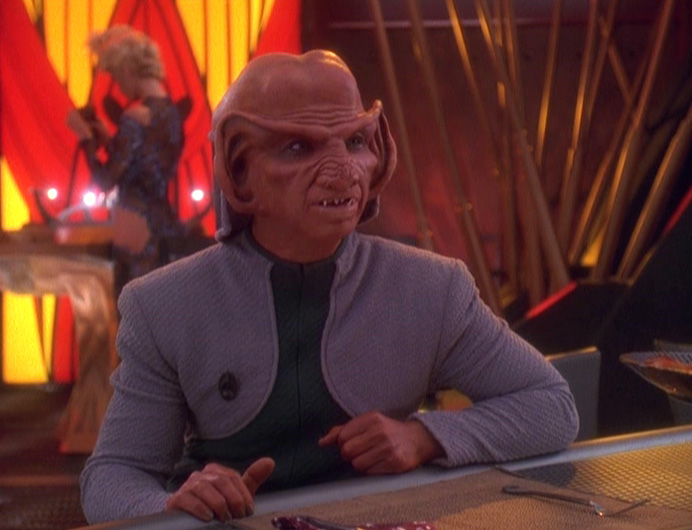
What doesn’t hold up
I truly hate this episode. It’s just so full of nonsense. It’s the worst of the “O’Brien suffers” episodes that we saw about once a year throughout DS9’s run. Colm Meaney, as usual, makes something out of the material, but it’s still a bad episode.
First of all, how would a pah-wraith banished to the fire caves for thousands of years have any idea how to modify the station’s systems? Granted, the creator knows what Keiko knows, but Keiko’s a freaking botanist! And given that she was surprised by O’Brien’s actions at the end, it’s not as if she was all-knowing.
Beyond that, why did she need to be in a runabout near the wormhole in the first place? She could have stayed on the station and gotten a pretty good view of her plan coming to fruition and not exposed herself to O’Brien’s switcheroo. There’s no evidence that she needed to be near the wormhole — and she likely was trying to secure the thing for ALL the pah-wraiths and not just herself. So, really, the only reason for her to be on the runabout was so that O’Brien could have a way out.
Then, there’s Rom. Now, it’s true that the Ferengi (Quark, Rom, Nog) can be good additions to episodes — whereas Ferengi-centric episodes are largely stupid if not pointless. But Rom’s actions here just are too hard to swallow.
Basically, he’s able to ascertain what’s going on by looking at the tasks O’Brien has him complete — which MIGHT make up half of O’Brien’s assignment — and remembering the wormhole/prophets stuff Leeta (Rom’s Bajoran girlfriend) has told him. A lot’s made about Rom being super smart after DS9’s first couple years (in which he was just written as an idiot) but his assessment here is a freaking miracle.
Of course, maybe this is further proof that Ferengi can absorb information more quickly than other races. Of course, if that’s true, it’s amazing that they’re such interstellar dunces.

Final thoughts
Then, there’s Keiko. Ugh.
Rosalind Chao’s not a bad actor. But the performance and writing of Keiko throughout DS9 paints her as mostly a nag who complains a lot. Initially, her plot line involved her unhappiness on the station where a botanist had little to do — and that was somewhat passable. But the school stuff mostly went away after the first season and Keiko basically became the unhappy wife.
It’s telling, then, that Keiko appeared just five times in DS9’s final three seasons, including in the final episode. With the Dominion war raging, there was a lot less for her to do — and, really, she and daughter Molly should have likely been away from the station while fighting was going on, anyway.
This episode really gives Chao the most to do that isn’t relegated to her family, other than the school stuff. Chao isn’t bad in the role, but the episode is just so full of holes that her performance isn’t nearly enough to make it a better overall viewing.
Coming later this week …
Odo’s a daddy! Sort of, maybe.

